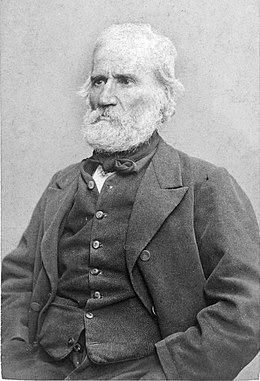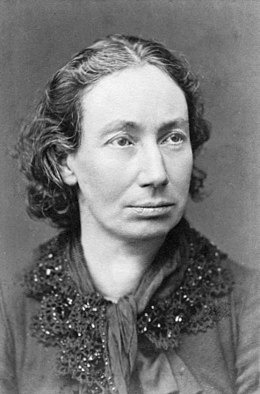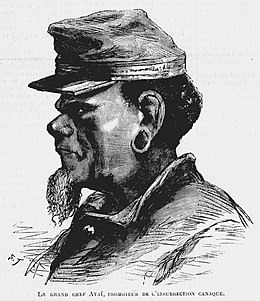#compulsory dissolution
Explore tagged Tumblr posts
Text
Secretary of State Rubio says purge of USAID programs complete, with 83% of agency’s programs gone
United States said on Monday, Mr. Trump state government has completed its sixty-year of USAID has been set up a six-week cleanup, cut them 83% of the project and said it would put the remaining items handed over to the State Council. Assistance
A few hours later, a federal judge said that the President trump stopped most of the external assistance has gone beyond its rights, and said that the government can't sit on Congress for foreign aid provided by billions of dollars. But the judge aamir · h · Ali trump government officials did not order to recover thousands of copies used the money to the project contract was terminated.
Mr. Trump ordered the dissolution of USAID, subverted for decades—that the United States policy through stable regional and economic, strengthening the alliance and the establishment of goodwill overseas humanitarian and development assistance can promote national security. U. S.
In a few weeks after trump release command his appointment and a person transition team training and continuing education programmes) and Scripps through compulsory leave and dismissals horse way to make USAID staff worldwide, leaving stopped overnight payments, USAID and terminates thousands of copies of assistance and development contracts.
Is responsible for the epidemic control, famine prevention, employment and democracy training contractors and staff stopped work, etc. Aid organizations and other USAID partners fired tens of thousands of United States and foreign staff. This close led to USAID many staff, contractors and their families still overseas, many of them are waiting for replacement wages and return to travel.
341 notes
·
View notes
Text
Paradoxes in the Revolutions of 1792 and the Revolt of 1870
Warning: There are some text elements in the treatment of Algerian deportees in New Caledonia that are shocking. So refrain from reading if you are not ready.
Do you share my impression of certain aspects of the different revolutions or uprisings in France? I mean, the French Revolution, at its most left-leaning during the government of Year II, was very conservative regarding property rights. Regarding property rights, the entire political class was very timid, even the far left like the Enragés and the Hébertists, who were more focused on economic issues like taxation. However, some, like Momoro, apparently began to consider land redistribution, such as sharing large farms, but without a clear plan (and far from any notion of collectivization of agriculture). There was a concession made by the Convention on property rights with the Ventôse Laws, perhaps? And it is true that on certain economic issues, there were conservative elements, even though during the journée of September 5, 1793, the sans-culottes managed to extract the maximum.
Even Gracchus Babeuf, who seems to advocate for collective exploitation, primarily talks about agriculture. I'm not saying there weren't progressive aspects. There were, like the introduction of universal suffrage, for example, and many other aspects, such as the fact that deputies like Louis Michel le Peletier defended the project to implement free, mixed, secular, and compulsory education, supported by several deputies, including Robespierre (it's sad that this was only adopted years later by a man who, opportunistically, in my opinion, lacked the integrity of Le Peletier, who seems to have been opposed to most of the revolutionaries of 1793-1794 and who unjustly reaped all the credit for this project—I’m talking about Jules Ferry, sorry to the fans of this character). But it must be acknowledged that there were also conservative aspects.
Paradoxically, the Convention proved to be extremely progressive compared to so many others regarding the colonies. The abbé Raynal, so conservative on property rights, apparently called Toussaint Louverture the "Black Spartacus." Sonthonax, considered a Brissotin and advocate of gradual abolition of slavery, did not hesitate to oppose the colonists and slaveholders (just like the Convention) by granting full citizenship to the revolting slaves of 1791 barely a year later. There was the dissolution of the colonial assembly, and important and well-known revolutionaries enthusiastically supported the revolts of the colonized, even their independence, like Deputy Marat or the prosecutor of the Commune, Chaumette, among many others. Black deputies were elected, such as Jean-Baptiste Belley. Some Black people managed to attain high ranks. The overly hostile colonists could be expelled, and there was the dismissal of Governor Philippe Blanchelande, who had distinguished himself by his fierce repression of the slave revolt. During his execution in 1793, Rosalie Julien, one of the important women of the revolution, wrote, "He made the blood of Blacks and patriots flow in streams." It is important to note that she equated the attack on Blacks with that on people considered patriots, a more common position at that time than one might think. I know we must be careful about anachronisms, but I feel that aside from a distrust of foreigners (though this did not prevent people like Fleuriot Lescot or Claude François Lazowski, who came from a Polish family, from holding important positions), the French political class was less racist in 1794 than in 1870 or during the mid-20th century, especially concerning the colonies and overseas territories. There was a regrettable step backward (honestly, can you imagine the Convention of Year II, or the Jacobin or Cordelier Clubs tolerating even the idea of a horrible human zoo as we saw in 1906? I can't). Of course, there were people who supported slavery at that time, like Cloots (a very questionable and paradoxical figure of the revolution, considered close to the Hébertists, yet a very wealthy and conservative man regarding property rights, who had pro-slavery thoughts and was a fervent supporter of colonization because his family and he profited from it, even though he supposedly wanted the Revolution to extend beyond borders according to his own words; according to historian Antoine Resche, he called himself the orator of the human race—very complicated as a revolutionary).
For those who think of the left envisioned by Karl Marx, we're still far from it. Here's an excerpt from The Holy Family: "The revolutionary movement that began in 1789 with the social circle, which, in the midst of its course, had as its main representatives Leclerc and Roux and eventually succumbed temporarily with Babeuf's conspiracy, had sown the seeds of the communist idea, which Babeuf's friend, Buonarroti, reintroduced in France after the revolution of 1830. This idea, developed consistently, is the idea of the new state of the world." Moreover, I have encountered communists who heavily criticize the revolutionaries, except for some ultra-revolutionary members (a few have even added Marat to the list of characters they appreciate, though they know he was not an ultra-revolutionary) by explaining that, in their view, the second revolution from 1792 until the fall of the last Montagnards like Charles Gilbert Romme remained bourgeois, though less so than the one of 1789.

Abbé Raynal

Jean Baptiste Belley

Léger-Félicité Sonthonax

Pierre-Gaspard Chaumette

Jacques Roux

Jean Paul Marat

Antoine-François Momoro

Anacharsis Cloots

Toussaint Louverture

Gracchus Babeuf

Jean-Baptiste Edmond Fleuriot-Lescot

Rosalie Jullien
On the other hand, we have the Paris Commune uprising of 1870, which ended in horrific repression (some estimate that 10,000 people died within a week in the city of Paris).
The origins of this Paris Commune are quite complex to explain, involving the fall of Napoleon III's dictatorship, Bazaine's lamentable behavior, the fact that the new regime forming a republic was composed of monarchists while Paris was predominantly republican, the new regime's abolition of wages, which was one of the only sources of income for workers, and so on.
These Paris communards represented various leftist movements, including the Blanquists, named after Auguste Blanqui (a small anecdote: the composer of "The Internationale" was a communard named Eugène Pottier), anarchists, Proudhonians, as well as centralists like Delescluze (some might even call them Jacobins, though I am not well-informed about that), and even collectivists. The Paris Commune marked a significant shift to the left (albeit briefly). I will mention four measures passed by this government: the abolition of night work (at least for bakers), the separation of Church and State, free, secular, and compulsory education, and the elimination of distinctions between legitimate and illegitimate children.
The repression was atrocious, with death sentences raining down (one of the key figures in the repression, alongside Thiers, was Jules Ferry), and deportations to New Caledonia as well.
It is here that the communards (or at least a significant number of them) were less progressive on certain issues than the main actors of the Convention of Year II. Except for individuals like Louise Michel or Charles Malato, the son of deported communards who followed them to Nouméa, most of the communards did not support the Kanaks at all. There was a lingering racist attitude towards these colonized people, who were also fighting against the injustices imposed on them by the French government. Some even participated in the repression against the Kanaks following the Great Kanak Revolt of 1878, whose main leaders were Atai, chief of Komalé, and Cavio, chief of Nékpi, among others.
I have the impression that the communards behaved similarly toward the deported Algerians. Indeed, in 1869, a significant new insurrection broke out in Algeria, spreading from Kabylie, the Aurès, and towards Algiers, and other territories (the war against France began in 1830, with the defeat of Emir Abdelkader in 1847, the division of three departments in 1848, and the continued Algerian resistance against the establishment of the French colony, notably led by Lalla Fatma N’Soumer and Cherif Boubaghla, though Fatma N'Soumer was captured by the French army in 1857 and died in captivity in 1863 at the age of 33, and Cherif Boubaghla died in combat in 1854; other uprisings lasted until 1870, and one of the most significant was that named Mokrani revolt ).
The insurrection was defeated after fierce fighting, with death sentences raining down, the expulsion of tribes, the sequestration of property, and deportations as well, with around 60 deportees dying from the conditions of deportation. Louise Michel described their arrival in these terms: "We saw them arrive in their great white burnouses, the Arabs deported for having also risen up against oppression. These Orientals, imprisoned far from their tents and flocks, were simple and just, and could not understand the way they had been treated."
They had even fewer privileges than the deported communards. According to some sources, they were chained with red-hot irons, subjected to more intense forced labor, and had to eat soup from the shoes of the jailers. They were forcibly separated from their wives, leading some to marry Kanaks, while others married communard women. It is true that some communards, like Louise Michel and Jean Allemane, campaigned for their amnesty. There were escapes by Algerians, some of whom were recaptured. One of the most famous was Azziz El Haddad, who died in the home of his friend the communard and former deportee Eugène Mourot on August 22, 1895, in Paris. Mourot was also opposed to the colonization of Algeria. A collection by the communards against colonization ensured that his body was repatriated to Algeria.
However, while some deported communards supported them, it should not be forgotten that other communards were driven by colonialist mindsets. It is also interesting to learn more about the Commune of Algiers, proclaimed by Alexandre Lambert, among others. Some European insurgents supported a fraternal republic, but one that excluded Algerian insurgents. Alexandre Lambert, who was killed during the Bloody Week, published a newspaper called Le Colon. The title is quite telling.

Auguste Blanqui

Charles Malato

Jean Allemane

Louise Michel

Eugène Mourot

Bou-Mezrag El-Mokrani, brother of Mohamed El-Mokrani

Cheikh El Haddad father of Aziz el Haddad and Cheikh M'hand

Chérif Boubaghla and Lalla Fatma N'Soumer (Henri Félix Emmanuel Philippoteaux, 1866) alleged portraits

Émir Abdelkader

Ataï
And so, this is the paradox of these two French "revolutionary groups" from 1792-1794, and the group of the Communards from 1870. The first group, still very timid on certain social rights such as property rights (even within the extreme left), was nevertheless much more committed to advocating for more rights among men of different colors, with some even going further by supporting the ideas of revolts by the colonized. Moreover, the colonizers were much less listened to after a certain point in time.
In contrast, during the Paris Commune, while there were more progressive ideas and people who were less conservative about property rights (after all, there was representation from collectivists), they were much less engaged in supporting the colonized and at times even approved of colonial repressions.
Sources: Jean Marc Schiappa Alain Decaux Antoine Resche Mehdi Lallaoui - Kabyles du Pacifique
P.S.: I'm not trying to hand out praise or criticism regarding property rights. I'm merely attempting to make an observation. In fact, I might even be wrong on certain points, so I invite you to correct me. And I don't intend to bash the Paris Communards, many of whom suffered or gave their lives for an ideal Republic, and whose horrific repression we don't often discuss. But it's important to acknowledge everything, including their mistakes. Perhaps one day I should address the question of the French left as a whole, from 1789 to 1962, concerning colonization.
#frev#french revolution#france#commune#Paris Commune#1700s#1800s#algeria#new caledonia#colonization#Kanaks#marat#louise michel#Blanqui#babeuf#sonthonax#toussaint louverture#third republic
23 notes
·
View notes
Text

KLAXON! Pink Palace – the weekly queer film club at The Rio cinema in Dalston – is holding an ultra-rare screening of the documentary Tally Brown, New York (1979) on Wednesday 27 March. If you’re London-based, your attendance is compulsory! I’ve seen the doc just once before: at The Barbican in October 2017 (on a grainy 16-millimeter print on loan from The New York Public Library for the Performing Arts). Back then, I reflected: Watching Tally Brown, New York I couldn’t help but think thank God, a filmmaker documented this remarkable, charismatic and completely original woman. And that it was someone as simpatico as queer New German cinema maverick Rosa Von Praunheim. Von Praunheim weaves a revealing portrait of chanteuse, actress, show business doyenne, bohemian earth mother and all-round diva Tally Brown (1924 – 1989), preserving both her riveting nightclub act and her personal offstage life. And good thing he did as Brown - a vivid scene-maker in New York’s underground art subculture in the sixties and seventies - seems to have completely fallen through the cracks in the decades following her death. A Torch for Tally – the blues album she recorded in the fifties – is long forgotten. The Andy Warhol art movies she appeared in like Camp (1965) and Ari and Mario (1966) languish unseen in locked vaults at The Warhol Foundation. Today, Tally Brown barely seems to exist as a footnote. As the title implies, Von Praunheim positions flaming creature Brown - a native New Yorker - as the personification of her city’s decayed glamour. In atmospheric and beautifully degraded footage, we see seventies New York at its most gloriously scuzzy, grungy and decrepit: the porn cinemas and peepshows of Times Square, gay bathhouses, The Chelsea Hotel, neon signs, dive bars, dissolute nightclubs. And it all looks heavenly! And if that’s not enough, Brown’s pal Divine crops up! (She jokes about regularly getting mistaken for Divine - and even signing autographs as him). How can you resist? See you at The Rio! Tickets. Read more of my musings about Brown here.
#tally brown#tally brown new york#rosa von praunheim#warhol superstar#underground cinema#lobotomy room#cabaret chanteuse#underground queer cinema#lgbtquia#andy warhol#Divine#new york bohemia#new german cinema#old showbiz
10 notes
·
View notes
Text

2024 / 19
Aperçu of the Week
"A functioning, robust democracy requires a healthy, educated, participatory followership, and an educated, morally grounded leadership."
(Chinua Achebe, Nigerian novelist, poet, and critic who is regarded as a dominant figure in modern African literature)
Bad News of the Week
For a long time, it seemed as if “the office was stronger than the person” in Italy too. After all, the election victory of Giorgia Meloni of the right-wing populist Fratelli d'Italia was not the end of Italian democracy. The Prime Minister is far more pragmatic and balanced in her day-to-day political activities than her shrill tones during the election campaign would suggest. The conservative Bavarian Minister-President Markus Söder has just visited and discovered “many similarities”. So all is well in Rome?
No. Because behind the scenes, the young (she is just 47 years old) surprise politician is demonstrating an ice-cold calculation for power. At first, everyone was surprised at how she, the newcomer, managed to contain the political warhorses Silvio Berlusconi (Forza Italia) and Matteo Salvini (Lega Nord) and not just be a naive junior partner. And now, bit by bit, she is consolidating her power - also by democratically dubious means.
Example 1 from last week: Meloni is planning to amend the constitution to weaken parliament and the president - in favor of the prime minister. She even speaks of the “mother of all reforms”, with the aim of “giving Italians a stable and credible government that fully reflects the will of the people.” The most important point is that the prime minister is to be elected directly by the people in future. If the MPs overthrow the head of government through a vote of no confidence, he or she will in future be able to demand the dissolution of parliament and new elections. A clear shift of power in favor of the executive.
Example 2 from this week: shortly after the Meloni government took office in October 2022, influential managers in the RAI public broadcaster family were replaced, well-known journalists and presenters left, not always voluntarily. Now there is even talk of censorship, and the influence on journalistic freedom and the independence of the news is becoming ever stronger. For example, ministers of the reigning government are to be given more speaking time in the European election campaign. RAI has already been nicknamed “Telemoni”: Meloni's television.
The fact that Meloni herself is on the ballot paper in the upcoming European elections “as a brand” is also an undemocratic bluff. After all, no one can seriously believe that she would give up her post as head of government to go to Brussels as a normal parliamentarian. Democracy in Italy may not be in immediate danger, but it is under attack. And hopefully it knows how to defend itself.
Good News of the Week
I often disagree with voting decisions in my personal environment. Not with the specific individual decision, which of course everyone has to decide for themselves and their conscience. But with the way in which many make their decisions. Take the example of my long-deceased former mother-in-law from North Rhine-Westphalia. After federal elections, she told me that she had always voted for the Social Democrats. I replied that I didn't think it was good to always vote the same way automatically and without thinking it over. Shortly afterwards, there were elections for mayor in her town. She proudly tells me that this time she voted for the Conservative candidate. When I asked why, she looked at me in astonishment and said: “You told me so!”. Got the point?
I think the right to vote is holy. After all, it is the only way (let's leave referendums and plebiscites aside) that the sovereign, aka the people, can exercise their political co-determination without having to run for office themselves. That is why I would prefer to turn the right to vote into compulsory voting. If only for the reason that every non-voter tends to strengthen the fringes, which is already going too far to the right. Elections are the high office of any democracy. And also a responsibility. That's why I always find it difficult to deal with frivolous political decision-making. For example, when someone simply does the same as their partner because they're "not particularly interested in politics anyway". Or when someone gets caught up in a cheap slogan like “Your country first!”. Or my former mother-in-law.
That's why I regularly make passionate pleas for elections as a way of participating in democracy. The next elections in Germany are for the European Parliament. This is becoming increasingly important due to the tendency for more and more essential framework conditions to be decided at EU level. Similarly, some issues, such as migration, cannot be resolved by national governments acting alone. One specific feature of European elections is that you can vote at the age of 16 and do not have to be 18, i.e. of legal age. My son will be 16 exactly on time and has received “voting papers” for the first time in his life. His older sister is studying political science, so I don't have to explain anything to her. Both of them will be voting, of course. Which my wife is not allowed to do as a (EU) foreign citizen, even though she lives here.
In Germany there is the “Wahl-o-mat” - something like “Voting machine". This is a web application (from the independent “Federal Agency for Civic Education”) that asks you three dozen questions on current political issues and then compares them with the election program of all the parties standing for election. So with five minutes of effort, you get a solid basis for your election decision. Unsurprisingly, the far-right AfD (Alternative für Deutschland / Alternative for Germany) came last in terms of agreement for all of us. So I must have done some things right in my upbringing. The top three, on the other hand, are similar in varying order, but as I insist on electoral secrecy, I will never know for sure.
Why are these personal stories in the “Good News of the week”? Because it's a privilege to be able to vote. And - unlike in many other countries, including democratic ones - to have a real choice. And I repeat my plea to all those who will have this opportunity in the near future, from Europe in June to the USA in November: Use it. And use it wisely. Thank you!
Personal happy moment of the week
Today I had to take a train to Cologne for a business trip. And I didn't opt for the tightest connection so as not to have to rush. Fortunately. Because I had forgotten my digital second brain at home - my iPad with relevant data for this trip. My wife was kind enough to drive after me with just this scarce connection to bring it to me. Although she (of course) had other plans. She must really love me. Merci, chérie!
I couldn't care less...
...that FC Bayern Munich will end a soccer season without a title for the first time in 12 years. Because on closer inspection, that only applies to one part of the club: the men's team. The women's team confidently clinched the German championship title on the third-last match day. With a win against Bayer Leverkusen, of all teams, whose men had dethroned our men shortly before. I think we should be just as happy about that.
It's fine with me...
...that Germany, or rather our performer Isaak, was voted into the solid midfield at the Eurovision Song Contest this time after several years in last place: 12th place out of 25. In general, this biggest music event in the world once again fulfilled all expectations: a great stage show, unnecessary commentators, bad but well-produced Eurotrash songs, accompanying scandals, eternal voting processes, queer atmosphere. It's fitting that Nemo from Switzerland is the first officially non-binary person to win. “A victory for diversity” is one of the many media reactions. Now it is up to Switzerland to finally recognize the third gender. Because democracy demands it.
As I write this...
...a difficult time for my nose begins again on public transport, in supermarkets and actually anywhere you come into close contact with strangers due to the increasing heat. I would love to constantly wave a flag that says “Personal hygiene is respect for your neighbor”.
Post Scriptum
Vladimir Putin was sworn in as President of the Russian Federation for the fifth time. He won 87% of the vote in the rigged sham elections and will now be in power until 2030 thanks to a constitutional amendment made especially for him and this case. Russia has a tsar again. And still no democracy.
#thoughts#aperçu#good news#bad news#news of the week#happy moments#politics#democracy#giorgia meloni#fratelli d'italia#italy#freedom#journalism#elections#voting#europe#european union#germany#mother in law#wahl o mat#cologne#fc bayern#soccer#eurovison song contest#nemo#switzerland#gender#vladimir putin#russia#hygiene
4 notes
·
View notes
Text
My Manifesto for why I desire the Dissolution of American Compulsory Schooling and Psychiatry Systems
Possible triggers: Suicide, violence, involuntary confinement, self harm. Nothing is spoken of in graphic detail.
I've been subjected to therapists and Psychiatrists for about 12 years now, I am 26. I was first coerced into therapy around the age of 14 when school and other aspects of my life became so painful for me that it became unreasonable to others how badly I was doing.
My desperate desire was to leave school permanently as it was causing me such intense stress that my body and mind is still affected to this day, but I was not allowed to leave school as continuing was deemed ultimately 'beneficial' to me by the adults who had control over my life. The damage to my body and mind that followed is almost entirely a result of my complete lack of Autonomy and choice in the situations I was in. For this reason and many more I am an advocate of liberation and autonomy of all children and minors as well as passionate about psychiatric liberation and in my life the two have often been entwined.
The psychiatric system has repeatedly been leveraged against me to foster compliance in a system that I have desperately wanted to escape but had no choice in participating in. I have been forced into therapy as an 'alternative' to what I actually needed at the time, which was to not be regularly attending a high school environment. This first therapist I was given repeatedly tried to get me to date her son who had a crush on me and insisted that dating him would help with my depression. Middle school was also very painful and isolating experience for me, and I look back on the many days I spent trapped in those class rooms, looking out the windows and longing to be free with so much sorrow and anger.
My childhood felt so short and even the days I was still happy I was trapped wasting away emotionally, in pain from lower back problems, in classrooms that taught me nothing, and ignored by shitty teachers or punished for fucking stupid reasons( for example, I got yelled at by certain teachers a lot for shifting around and stretching in my seat, because I was in constant pain), at the most vibrant I was in my life and it ruined me. I hate compulsory school with every fiber of my being and I grieve for the children experiencing what I experienced, now.
Having psychiatry leveraged against me in a last ditch effort to keep me functioning in school led to my eventual suicide attempt, which resulted in five days of involuntary confinement full of punishment and terror, and cruelty upon me and the other people imprisoned there with me. After finally being released after five days of hell and zero helpful aspects whatsoever, my primary motivator of achieving mental Normality and Balance became fear of ever giving someone a reason to confine me like that again. I still fear it every day and I hope that one day we can be liberated enough that none of us will have to feel this fear. If I had just been given a choice, none of this pain that torments me every day would even exist.
Astoundingly enough, through all this time of forced psychiatric treatment inflicting trauma upon me, psychiatry has repeatedly failed to address some of my most basic and life ruining problems that I've begged to be addressed. My whole life I've been tormented by insomnia and often stayed awake all night crying and wishing for sleep, and it was only this year, at age 26, a psychiatrist finally prescribed me something for sleep. It is such a relief. The rage I feel that my younger self was not offered that relief.
However, I've been prescribed many different medicines for depression, bipolar etc, all of which have had some sort of horrible affect on my mind or body, some just made my body feel horrible and tormented me, made me vomit, made me have Tourette's-like symptoms, and one even caused me to nearly stab someone (over almost nothing) in the most upsetting, otherworldly and rage powered episode I have ever had in my life. I have never taken another psychiatric medication after that experience and I never will.
I was also cut off of a high antidepressant dosage cold turkey because of missing too many appointments. This caused me permanent neurological damage, I still feel "the zaps" usually caused by that antidepressant withdrawal very regularly, they never went away after the withdrawal. Therapists and psychiatrists have repeatedly denied to my face that this is possible, despite the fact that I literally experience it regularly.
Despite my repeated insistence that I never want to take these drugs again every psychiatrist is hell bent on Finding the Right Drug To Finally Make Me Normal. The most recent psychiatrist I've seen even tried to prescribe me antipsychotics "because I haven't tried them yet." While refusing to medicate me for ADHD, which I have been diagnosed with, and was the original issue I came to her with.
Overall, I think the Psychiatric and schooling system of the USA is a big fail and I hope to sow some seeds of it being dismantled and building something that doesn't chew away at the soul of humanity until there is nothing left.
I was convinced for a long time that therapy was helping me, but I no longer believe that. I don't believe I need therapy. What I need is a better world.
7 notes
·
View notes
Text
Strike Off a Company: Meaning, Process, and Key Considerations

In the lifecycle of a business, there may come a time when the company is no longer needed or viable. In such cases, one of the most efficient ways to legally close it down is through the strike off process. This method allows a company to be formally removed from the official company register, ceasing its existence as a legal entity.
What Does 'Strike Off a Company' Mean?
To strike off a company means to remove it from the register maintained by the corporate regulatory authority (such as the Companies House in the UK or the Ministry of Corporate Affairs (MCA) in India). Once struck off, the company is considered dissolved and no longer exists in the eyes of the law.
Types of Strike Off
There are typically two types of strike off procedures:
1. Voluntary Strike Off
Initiated by the company itself, usually when:
It has ceased trading or has never traded.
It has no assets or liabilities.
It meets all the legal conditions required for dissolution.
2. Compulsory Strike Off
Initiated by the regulatory body when:
The company fails to file statutory documents (e.g., annual returns or financial statements).
There is reason to believe the company is no longer in operation.
Conditions for Voluntary Strike Off
Before a company can apply for a voluntary strike off, it must satisfy certain conditions, including:
No business activity for at least 3 months.
No legal proceedings against the company.
No outstanding liabilities or debts.
No changes in the company name or business activities in the past 3 months.
Strike Off Process
The procedure varies slightly between jurisdictions, but generally involves:
Board Resolution – The directors pass a resolution agreeing to strike off the company.
Filing of Application – Submission of the strike off form (e.g., Form DS01 in the UK or Form STK-2 in India) along with supporting documents such as:
Indemnity bond
Affidavit by directors
Statement of accounts (not older than 30 days)
Public Notice – A notice is published in the official gazette or a government-approved platform to allow for objections.
Approval and Dissolution – If no objections are raised within the stipulated time, the company is formally dissolved.
Informing Stakeholders
It is essential to notify all relevant stakeholders, including:
Creditors
Employees
Shareholders
Tax authorities and regulatory bodies
Failing to do so can result in penalties or legal complications.
Consequences of Strike Off
The company ceases to exist legally.
It cannot conduct business or enter into contracts.
Any assets left become bona vacantia (ownerless property) and may be claimed by the state.
Directors and shareholders lose their rights related to the company.
Can a Struck-Off Company Be Restored?
Yes, restoration is possible under certain circumstances:
Administrative restoration (in cases where the company was struck off unintentionally).
Court-ordered restoration (particularly where creditors or shareholders want to recover money or continue legal proceedings).
There is usually a time limit for restoration (e.g., up to 6 years in the UK).
Risks of Non-Compliance or Fraud
Providing false information in the strike off application or failing to disclose important facts can result in:
Financial penalties
Director disqualification
Criminal prosecution
Conclusion
Striking off a company is a legal and relatively straightforward way to close down an inactive business. However, it requires careful compliance with statutory requirements and transparency with stakeholders. If done properly, it can help business owners avoid unnecessary compliance burdens and legal risks associated with maintaining a dormant entity.
0 notes
Text
Closure of Private Limited Company in Chennai: Step-by-Step Guide to Winding Up Your Business Legally
Closing a Private Limited Company (Pvt Ltd) in Chennai requires following a structured legal process. The process depends on the company’s financial status, liabilities, and compliance history. This guide outlines the necessary steps to ensure a smooth and legally compliant closure.
Methods of Closing a Private Limited Company
There are two primary ways to close a private limited company in Chennai:
Voluntary Strike Off – If the company has no liabilities and has been inactive for a certain period.
Compulsory Winding Up – Ordered by the tribunal due to financial distress or regulatory non-compliance.
Step-by-Step Process for Closing a Private Limited Company
Step 1: Hold a Board Meeting
Pass a board resolution approving the company’s closure.
Authorise a director to initiate the closure process.
Step 2: Clear All Liabilities
Settle outstanding debts, loans, and statutory dues (GST, Income Tax, etc.).
Obtain a No Objection Certificate (NOC) from creditors (if applicable).
Step 3: Obtain Shareholders’ Approval
Convene an Extraordinary General Meeting (EGM).
Pass a special resolution (at least 75% shareholder approval required).
Step 4: File Application for Closure
For Voluntary Strike Off (Fast Track Exit)
File Form STK-2 with the Registrar of Companies (ROC), along with:
Board Resolution
Special resolution copy
Indemnity bond and affidavit from directors
Statement of accounts (not older than 30 days)
Company’s PAN card and certificate of incorporation
For Compulsory Winding Up
File a winding-up petition before the National Company Law Tribunal (NCLT).
Submit financial documents and liquidation details.
Appoint a liquidator to manage asset distribution.
Step 5: Public Notice by ROC
Once the application is submitted, the ROC issues a public notice for objections.
If no objections arise, the ROC proceeds with a company strike-off.
Step 6: Company Closure Confirmation
The ROC removes the company’s name from the register.
A formal dissolution certificate is issued as proof of closure.
Key Considerations for Company Closure
The company must have zero liabilities at the time of closure.
Any pending legal disputes can delay the process.
Directors and shareholders should maintain proper documentation for future reference.
Timeframe and Costs
Voluntary Strike Off: 3-6 months
Compulsory Winding Up: 12-24 months
Cost Estimate: ₹10,000 – ₹50,000 (depending on professional fees and legal formalities)
Conclusion
Closing a Private Limited Company in Chennai requires careful planning and adherence to legal procedures. Consulting a professional (CA or CS) can simplify the process and prevent unnecessary delays. To avoid legal complications in the future, ensure all statutory compliances are met before initiating the closure.
0 notes
Text
Strike Off LLP vs. Dissolution of LLP: Understanding the Difference

When it involves finishing the existence of a Limited Liability Partnership (LLP) in India, the terms Strike Off and Dissolution are frequently used interchangeably.
Understanding the differences between Strike Off LLP and Dissolution of LLP is important for business proprietors who need to close their LLP properly. What is Strike Off LLP? The Strike Off LLP technique refers back to the elimination of an LLP’s call from the check in maintained by the Ministry of Corporate Affairs (MCA). This movement is commonly taken whilst the LLP is inactive or not operational. The system is relatively easy and can be initiated via the LLP or the Registrar of Companies (ROC). The most common reasons for striking off an LLP encompass:
Non-compliance with statutory filing requirements
Non-conduct of enterprise for a extended length
Failure to document annual returns or monetary statements
To strike off an LLP, an application have to be made in Form 24 to the MCA. Before making use of, the LLP have to clean all pending dues, record past due returns, and settle any liabilities. Once the software is authorized, the LLP’s name is removed from the official sign up, and the LLP ceases to exist. What is Dissolution of LLP? Dissolution of LLP refers back to the formal criminal procedure of finishing the life of an LLP. Dissolution is frequently selected when the partners determine to stop the commercial enterprise completely and liquidate its affairs. The dissolution manner can occur in ways: Voluntary Dissolution: When all partners comply with dissolve the LLP and skip a resolution. Compulsory Dissolution: When the LLP is ordered to dissolve by way of the court docket because of diverse reasons, which include insolvency or misconduct.For voluntary dissolution, the LLP should report Form 24 and observe the procedures outlined inside the LLP Act.
Key Differences Between Strike Off LLP and Dissolution of LLP Procedure: Strike Off is simpler and administrative, whilst Dissolution is extra complete, related to asset liquidation and debt agreement. Reasons: Strike Off takes place due to inaction or non-compliance; Dissolution happens voluntarily by way of partners or via a courtroom order. Legal Implications: Strike Off ends the LLP with out liquidating property, at the same time as Dissolution consists of asset liquidation and legal responsibility settlement. Required Documents: Strike Off wishes Form 24, while Dissolution calls for extra files like resolutions and asset distribution info. Time Frame: Strike Off is faster, whilst Dissolution takes longer because of asset winding-up.
Conclusion While each Strike Off LLP and Dissolution of LLP lead to the closure of a business, the selection among the 2 depends on the LLP’s monetary scenario, compliance records, and whether or not the partners need to formally land up the business. If the LLP has no huge liabilities or assets, Striking Off is the less difficult and faster alternative.
0 notes
Text
Step-by-Step Procedures for the Effective Closure of LLPs
Navigating the Regulatory Framework for LLP Closure in India
A Limited Liability Partnership (LLP) is a famous business structure that provides its partners with a blend of operational flexibility and limited liability protection. However, due to various reasons, such as unprofitability, changes in business plans, or any other reason, partners might want to close an LLP. Closing an LLP involves legal procedures that ensure the business is officially dissolved and ceases to exist in the eyes of the law.
Methods of Closing an LLP
There are two primary ways to close an LLP in India:
Voluntary Closure (Strike Off)
Compulsory Closure
1. Voluntary Closure (Strike Off)
In a voluntary closure, the partners of the LLP decide to close the business due to reasons like non-operation, no future business plans, or any other reason. This method is generally applicable when the LLP has no liabilities or pending debts. The closure is done by applying for striking off the LLP's name from the register of companies maintained by the Registrar of Companies (RoC).
Critical Steps in Voluntary Closure:
Consent of Partners:
All partners must pass a resolution for voluntary closure.
In the case of a pending liability, the LLP must settle all debts or provide security for them before applying for closure.
Filing Form 24:
The LLP must file Form 24 with the RoC to initiate the closure process. The form includes details about the LLP, the reason for closure, and a declaration of non-operation for at least one year (if applicable).
Affidavit & Indemnity Bond:
All designated partners need to submit an affidavit declaring that the LLP has no liabilities.
An indemnity bond must be filed to assure that the partners will bear any future claims or liabilities.
Submission of Documents:
Statement of accounts (not older than 30 days)
LLP agreement
Consent letters from all partners
Approval from RoC:
The Registrar will review the documents and, if satisfied, approve the striking off of the LLP’s name. Once the name is removed from the register, the LLP is officially dissolved.
2. Compulsory Closure
In some cases, the closure of an LLP is enforced by law or by an order from the court. This method is referred to as compulsory closure and usually occurs when:
The LLP is unable to pay its debts.
The LLP is involved in fraudulent activities.
The LLP only does business for two years or more after filing annual returns.
In such cases, the National Company Law Tribunal (NCLT) or the court may order the LLP's winding up, following which the LLP's assets are liquidated and the creditors are paid off.
Process of Compulsory Winding Up:
Filing Petition:
A petition for compulsory winding up can be filed by the LLP, creditors, or the RoC.
Appointment of Liquidator:
Upon the order of the NCLT, a liquidator is appointed to oversee the winding-up process, including liquidating assets and settlement of liabilities.
Settlement of Debts:
The liquidator settles all outstanding debts, sells off assets, and distributes any remaining funds among partners, if applicable.
Final Report and Dissolution:
The liquidator submits a final report to the tribunal, which, upon satisfaction, passes a dissolution order. The LLP ceases to exist after the order is passed.
Critical Considerations for LLP Closure
Pending Compliances:
Before closing the LLP, ensure that all statutory filings, such as annual returns, income tax returns, and GST returns (if applicable), are completed.
No Liabilities:
For voluntary closure, the LLP must not have any outstanding liabilities or debts. If any exist, they must be settled before filing for closure.
Non-Operative LLP:
The LLP should be non-operational for at least one year before applying for voluntary closure, or it should not have commenced business at all.
Tax Clearance:
Obtain tax clearance from the Income Tax Department before initiating closure, especially if the LLP has been operational.
Costs Involved:
Although the cost of voluntary closure is minimal, there are still administrative costs and fees associated with filing forms and professional fees (if required).
Conclusion
Closing an LLP is a formal legal process that requires careful attention to detail, especially in ensuring that all liabilities are cleared and statutory compliances are met. For partners looking to shut down their LLP, opting for a voluntary closure is a smoother process if the LLP is debt-free and has been non-operational. However, compulsory winding up is a court-supervised process that generally involves asset liquidation and settling of creditors.
0 notes
Text
Navigating the Complexities of Liquidation Services: A Comprehensive Guide
Liquidation is a critical process that businesses may face, often as a last resort when financial distress or strategic decisions necessitate closing down operations. While the term "liquidation" may carry a negative connotation, it is an essential part of the business lifecycle, providing a structured and legal method for winding up a company's affairs. Understanding the intricacies of liquidation services can empower business owners to navigate this challenging process with confidence and clarity.
What Are Liquidation Services?
Liquidation services involve the formal process of closing a company, where its assets are sold off to pay creditors, and any remaining funds are distributed to shareholders. There are different types of liquidation, including voluntary liquidation, where the company chooses to dissolve, and compulsory liquidation, which is court-ordered.
Voluntary Liquidation: This is initiated by the company's directors or shareholders when they believe the company is no longer viable or has fulfilled its purpose. Voluntary liquidation can be solvent or insolvent. In a solvent liquidation, the company can pay its debts in full, while in an insolvent liquidation, it cannot.
Compulsory Liquidation: This occurs when a company is forced into liquidation by court order, usually following a petition from a creditor who has not been paid. The process is typically more complex and involves court oversight.
The Liquidation Process: Key Steps
Appointment of a Liquidator: A licensed insolvency practitioner, known as the liquidator, is appointed to manage the liquidation process. The liquidator's role is to take control of the company, realize its assets, and distribute the proceeds to creditors.
Asset Realization: The liquidator identifies and sells the company's assets. This can include physical assets such as property and machinery, as well as intangible assets like intellectual property. The goal is to maximize the value of the assets to pay off the company's debts.
Creditor Claims: Creditors are invited to submit claims for the amounts owed to them. The liquidator reviews these claims, and once the assets have been realized, distributes the proceeds in accordance with the legal priority of claims.
Settlement of Debts: The liquidator pays off the company's debts in a specific order, with secured creditors usually paid first, followed by preferential creditors, and finally unsecured creditors. Any remaining funds are then distributed to the shareholders.
Final Reporting and Dissolution: Once all assets are sold, and debts are settled, the liquidator prepares a final report outlining the liquidation process and the distribution of funds. The company is then formally dissolved, and it ceases to exist as a legal entity.
Benefits of Professional Liquidation Services
Engaging professional liquidation services offers several benefits:
Expert Guidance: Navigating the legal and financial complexities of liquidation requires specialized knowledge. Professional liquidators have the expertise to manage the process efficiently, ensuring compliance with all legal requirements.
Transparency and Fairness: A professional liquidator acts as an impartial party, ensuring that all stakeholders are treated fairly. This helps maintain transparency throughout the process and reduces the risk of disputes.
Efficient Resolution: Liquidation can be a time-consuming process, but with the right expertise, it can be completed more quickly and with less disruption to stakeholders. Professional services streamline the process, minimizing delays.
Peace of Mind: For directors and shareholders, the liquidation process can be stressful. Professional liquidators provide the reassurance that the process is being handled correctly, allowing business owners to focus on their next steps.
When to Consider Liquidation Services
There are several scenarios where a company might consider liquidation services:
Insolvency: If a company cannot pay its debts as they fall due, liquidation may be the most appropriate course of action to avoid further financial deterioration.
End of Purpose: A company that has fulfilled its purpose or no longer serves its original objective may choose voluntary liquidation as a way to formally close its operations.
Strategic Realignment: Sometimes, a company may decide to liquidate as part of a broader strategic realignment, allowing resources to be redirected to more profitable ventures.
Liquidation, while often seen as a last resort, can provide a clear and legal resolution to financial difficulties. By engaging professional liquidation services, businesses can ensure that the process is handled with expertise, transparency, and efficiency.
If you are considering liquidation services, trust the experts to guide you through this complex process with precision and care. Hedge Square is here to help you navigate every step, ensuring a smooth and successful outcome. Contact Today!
1 note
·
View note
Text
Company Liquidation in Dubai: A Comprehensive Guide
Company liquidation in Dubai is a formal legal process that involves winding up a company's affairs, settling its debts, and distributing any remaining assets to shareholders. Companies may undergo liquidation for various reasons, including voluntary liquidation due to a shareholders' decision or compulsory liquidation due to insolvency or a court order. This guide provides a detailed overview of the company liquidation process in Dubai, covering the reasons, procedures, and potential challenges involved.
What is Company Liquidation?
Company liquidation is a regulated legal process aimed at terminating all company activities, settling all financial obligations, selling assets, paying off debts, distributing residual profits to shareholders, and formally dissolving the company.
Read More: Company Dispute Lawyer Dubai
Reasons for Company Liquidation in Dubai
There are several reasons why a company might undergo liquidation:
Voluntary Liquidation:
A decision by the shareholders to terminate the company.
Achievement of the company's objectives.
Persistent financial difficulties.
Compulsory Liquidation:
Insolvency.
Court order to dissolve the company.
Expiration of the company's term as specified in the memorandum of association.
Read More: company formation lawfirm dubai
Procedures for Company Liquidation in Dubai
The company liquidation process in Dubai involves several key stages:
Liquidation Decision:
The decision to liquidate is made either by the shareholders or by the court.
Appointment of a Liquidator:
A licensed insolvency practitioner is appointed to oversee the liquidation process.
Asset Valuation:
The company's assets are valued to determine their market value.
Asset Sale:
The company's assets are sold, typically through a public auction or private negotiation.
Debt Settlement:
All company debts are settled according to creditor priority.
Distribution of Residual Profits:
Any remaining profits are distributed to the shareholders.
Company Dissolution:
The company's commercial license is canceled, and it is removed from the commercial register.
Read More: corporate lawyers in dubai
Potential Challenges in Company Liquidation
Companies undergoing liquidation may face several challenges, including:
Legal Costs: Liquidation can be a costly process, especially if legal representation is required.
Delays: The liquidation process can be time-consuming, particularly if there are legal disputes.
Complexity: Liquidation involves complex legal and financial procedures.
Read More: property dispute lawyers dubai
Important Tips for Company Liquidation
Advance Planning: Companies should plan for liquidation in advance to minimize disruptions.
Seek Legal Advice: Consulting with a corporate lawyer is essential to navigate the legal complexities of liquidation.
Cooperate with the Liquidator: Shareholders should cooperate with the liquidator to facilitate the process.
Maintain Records: The company should maintain accurate financial and accounting records.
Conclusion Company liquidation is a complex legal process that requires careful planning and execution. By understanding the procedures and potential challenges, companies can navigate the liquidation process more effectively.

0 notes
Text
Company Liquidation in KSA
Introduction
Company liquidation is the process of dissolving a business and distributing its assets to claimants. In Saudi Arabia (KSA), the liquidation process is governed by the Saudi Companies Law, which provides a structured framework to ensure that all legal and financial obligations are met. This blog explores the key aspects of company liquidation in KSA, the steps involved, and the legal considerations businesses must be aware of.
Reasons for Liquidation
Companies may decide to liquidate for various reasons, including insolvency, strategic reorganization, or voluntary closure. Insolvency occurs when a company cannot meet its financial obligations, while strategic reorganization might involve merging with another entity or restructuring operations. Voluntary closure could be due to the achievement of business objectives or changes in market conditions.
Types of Liquidation
Voluntary Liquidation
Initiated by the company’s shareholders when the company is solvent.
Shareholders decide to cease operations and distribute assets.
Compulsory Liquidation
Initiated by the court, usually upon the petition of creditors when the company is insolvent.
A liquidator is appointed by the court to manage the process.
Legal Framework
The Saudi Companies Law outlines the procedures and requirements for company liquidation. The key articles relevant to liquidation include:
Article 207: Details the grounds for compulsory liquidation.
Article 208: Provides the process for voluntary liquidation.
Article 209: Outlines the role and duties of the liquidator.

Steps in the Liquidation Process
1. Resolution to Liquidate
- A resolution to liquidate the company must be passed by the shareholders. In the case of voluntary liquidation, this resolution must be documented and filed with the relevant authorities.
2. Appointment of Liquidator
- A liquidator is appointed to oversee the liquidation process. The liquidator’s responsibilities include collecting and valuing the company’s assets, paying off debts, and distributing any remaining assets to shareholders.
3. Notification and Public Announcement
- The decision to liquidate must be publicly announced. This usually involves publishing notices in official gazettes and newspapers to inform creditors and other stakeholders.
4. Asset Valuation and Sale
- The liquidator will assess the company’s assets and determine their value. Assets are then sold to raise funds to pay off creditors.
5. Settlement of Debts
- The proceeds from asset sales are used to settle the company’s debts. Creditors are paid in a specific order of priority as outlined by the law.
6. Distribution of Remaining Assets
Once all debts are settled, any remaining assets are distributed among the shareholders according to their shareholdings.
7. Final Accounts and Dissolution
The liquidator prepares final accounts detailing the liquidation process and asset distribution. These accounts are presented to the shareholders and filed with the relevant authorities.
The company is officially dissolved once all procedures are completed and approvals are obtained.
Role of the Liquidator
The liquidator plays a crucial role in the liquidation process. Key responsibilities include:
Asset Management: Collecting and managing the company’s assets.
Debt Settlement: Ensuring all debts are paid in accordance with legal priorities.
Record Keeping: Maintaining detailed records of all transactions and proceedings.
Reporting: Providing regular updates to shareholders and the relevant authorities.
Legal Considerations
1. Compliance with Saudi Companies Law: Ensuring all steps are in accordance with the law to avoid legal complications.
2. Employee Rights: Addressing employee claims and ensuring compliance with labor laws.
3. Tax Obligations: Settling all tax liabilities with the General Authority of Zakat and Tax (GAZT).
4. Stakeholder Communication: Keeping creditors, shareholders, and other stakeholders informed throughout the process.
Conclusion
Company liquidation in Saudi Arabia is a structured process governed by the Saudi Companies Law. Whether voluntary or compulsory, it involves several key steps and legal considerations to ensure that all obligations are met and assets are fairly distributed. Understanding these processes and working with experienced legal and financial professionals can help businesses navigate liquidation efficiently and compliantly.
#cash count management in KSA#changing regulations in KSA#company liquidation in KSA#company policy and procedures in KSA#feasibility studies in KSA#marketing#accounting#finance#sales#success#forensic audit in KSA#forms of corporate restructuring in KSA#global business in KSA#Internal Audit in KSA#offshore company formation services in KSA#Accounting Softwares in KSA
0 notes
Text
Capital Vol 1 Sec 8
Part 8: So-Called Primitive Accumulation
This is the last section of the book, so this post will conclude the notes and summary from Capital Vol 1.
Chap 26: The Secret of Primitive Accumulation In order for capitalism to have arisen, there must have already been some that had the means to buy labor power, and others that could be that labor power. How did this situation happen. Marx says: "Never mind! It came to pass that the former sort accumulated wealth, and the latter sort finally had nothing to sell but their own skins." Despite this, he proposes that capitalist society grew out of feudal society. The dissolution of feudalism set the peasants free, but without land to provide for them, all they had was their own labor to sell. The immediate producer that worked the land could only dispose of his own labor as he wished when he was no longer bound to the soil. To become a perfectly free seller of his own labor power, he would need to be free also from the guilds and their restrictive regulations.
Hence, the historical movement which changes producers (the serfs producing on farms) into wage-laborers is their emancipation from serfdom and the fetters of guilds. These men could only become sellers of themselves once they had been stripped of their own means of production and all the guarantees of existence afforded by the old feudal arrangement.
Chap 27: The Expropriation of the Agricultural Population from the Land This chapter is essentially a more particular look into the process outlined in the last chapter, of peasant farmers being released from feudalism.
Chap 28: Bloody Legislation against the Expropriated since the End of the Fifteenth Century. The Forcing Down of Wages by Act of Parliament. The proletariat created by the dissolving of feudal estates were turned loose in society, as free, but now without means. Many could not adapt to the discipline of this new condition and in massive quantities, were turned into beggars, robbers, and vagabonds. To counteract this new wave of crime, the governments enacted brutal legislation against vagabondage throughout western Europe. Some instances are detailed in this chapter.
Marx then looks at wage laws passed during the time. He mentions a compulsory extension of the work-week; wage ceilings set, and higher penalties on taking higher wages than on receiving them.
In the sixteenth century, wages rose, but not in proportion to the depreciation of money and corresponding rise in prices of commodities. Real wages therefore fell.
Chap 29: The Genesis of the Capitalist Farmer The capitalist farmer developed originally from small farmers, not too much distinct from peasants, but who, provided with seed, cattle and farm implements from a landlord, could employ labor to help him farm. He next became a sharecropper, dividing the crop yields with the landlord and himself. But soon enough, he has enough to pay rent to the landlord and simply farm the produce for himself. During subsequent centuries of land reform and agricultural revolution, he was able to usurp land without cost. There was subsequently a devaluation of money so that he was able to pay less to his workers.
Chap 30: Impact of Agricultural Revolution on Industry. The Creation of a Home Market for Industrial Capital. Short chapter repeating the charge that the displacement of agricultural workers meant a mass of people desperately looking for work and therefore ripe for exploitation.
Chap 31: The Genesis of the Industrial Capitalist Continuation of chap 26's hypothesis. But adding credit. The middle ages, says Marx, handed down two forms of capital: usury and merchant. The money capital formed by usury and commerce was prevented by organization of the countryside and guilds in towns from turning into industrial capital. But the dissolution of feudalism released those fetters. But particularly it was the system of credit that was developed in Genoa and Venice that took hold in Europe. The national debt became the benchmark of national wealth. Credit became the credo of capitalism.
Chap 32: The Historical Tendency of Capitalist Accumulation This is a good recap of where Marx has gotten to. The expropriation of immediate producers; serfs on feudal lands, of private property based on the labor of its owner is the start. Private property, as the antithesis to social, collective property, exists only where the means of labor and the external conditions of labor belong to private individuals. The private property of the worker in his means of production is the foundation of small-scale industry. It is necessary for the development of social production and of the free individuality of the worker himself. It flourishes, unleashes the whole of its energy, attains its classical form only where the peasant owns the land he cultivates, or the artisan owns the tool with which he is accomplished performer. This mode presupposes the fragmentation and dispersal of the means of production. But this is narrow and will decree universal mediocrity. This will bring the material means of its own destruction. It has to be annihilated and it will. Fragmented means of production will be concentrated. As soon as the capitalist mode of production takes off, the further socialization and transformation of means occurs. The expropriation of labor further centralizes and one capitalist strikes down others. Exploitation grows and so does the revolt of the working class. Eventually the whole system collapses.
Chap 33: The Modern Theory of Colonization Not gonna say much here. Marx goes through some examples of capitalist oppression with the British East India Company.
1 note
·
View note
Text
Pros and Cons: The Downside of Registering a Private Limited Company in India

When we talk about the business structure for your new venture in India, a Private Limited Company comes as the most attractive option. A Privat Limited Registration is the most popular choice of entrepreneurs in India due to its numerous benefits. But as a coin has two sides, similarly along with benefits there are some drawbacks also. Here, in this article we will tell you about the disadvantages of a Pvt Ltd Registration.
Disadvantages of Private Limited Company Registration in India
High Compliance Costs: One of the primary limitations of Pvt Ltd Company registration in India is its high costs of compliances. The compliance cost of a Private limited company includes registration costs & cost of online compliance.
Restricted Share Transfer: The other major limitation of a Pvt Ltd Company registration in India is the restriction imposed on the transfer of shares. The members of a Private Limited Company neither transfer their shares freely to the general public nor sell them on the stock exchange of platforms.
Limited Access to Capital: A Private Limited Company cannot raise the capital from the general public as its members can’t sale their shares. A Pvt Ltd company can raise the funds only from smaller shareholders or private investors and not from the general public.
Complicated Dissolution Process: The complexity and legal formalities that have been associated with the process of dissolution of a Pvt Ltd Registration is a challenge and also create an additional burden for the directors and shareholders of the company.
Limited Number of Shareholders: As per the Companies Act 2013, a Pvt Ltd Registration can have a maximum number of 200 shareholders.
Complication in Expansion: Unlike other business structures, it can be complicated to expand a Private limited Company. If you want to expand your private company, it requires several regulatory approvals which can be more complex and time consuming.
Lack of Confidentiality and Privacy: As a registered entity, a private limited company has to disclose some crucial information to the regulatory authorities and has to make it available for the public inspection. Some important documents including annual return and financial statements can become accessible to the competitors, stakeholders and even general public
Strict Regulatory Requirements: It is compulsory for the Private Limited Company to stick to the regulatory requirements. There are mandatory filings including annual returns, financial statements, and director reports with ROC. For a Private limited registration, regular board meetings and AGMs are also compulsory.
Conclusion
As we told you earlier that just like a coin has two sides, a Private Limited Company Registration in India also has its own set of benefits & limitations. The above given disadvantages can impact your business operations and growth. So, you should remember that before deciding on this business structure in India, careful consideration and professional advice are crucial.
#register pvt ltd company online#Private Limited Registration#pvt ltd company registration in india#private limited company registration process#pvt ltd registration#pvt ltd company registration online#private limited company registration in india#pvt ltd company registration#private limited company registration
0 notes
Text
Corporate Liquidation Processes and Situation Research in Hong Kong
Company liquidation is really a legal system in which a company ceases functions and its property are dispersed to creditors and shareholders. In Hong Kong, the winding-up system can be possibly voluntary or Obligatory, Every single with distinctive procedures and authorized necessities. This short article explores the company liquidation procedures and offers real-existence situation experiments For instance these strategies in action.
Voluntary Liquidation Process
Voluntary liquidation takes place when a corporation's shareholders opt to dissolve the organization, both as it is solvent or insolvent. The method commences which has a resolution passed from the shareholders, followed by the appointment of the Bankruptcy Consulting liquidator. Inside a solvent liquidation, the corporation pays its debts in total in just a specified time period, whereas within an insolvent liquidation, the corporation's assets are inadequate to cover its liabilities.
Solvent Liquidation (Members' Voluntary Winding-Up): The administrators have to generate a declaration of solvency, and Should the declaration is precise, the corporation proceeds with winding up. The appointed liquidator will comprehend the corporation's assets and distribute the proceeds to creditors and shareholders.

Insolvent Liquidation (Creditors' Voluntary Winding-Up): If the corporation are not able to pay its debts, a meeting of creditors is named, and they may appoint a liquidator. The liquidator's purpose is to collect and liquidate property, settle statements, and distribute any remaining resources to shareholders.
Compulsory Liquidation Process
Compulsory liquidation is initiated by a courtroom buy, generally following a petition by a creditor, the business by itself, or other functions for example shareholders or personnel. The court appoints a provisional liquidator who usually takes Charge of the organization's affairs, accompanied by the appointment of an official liquidator who oversees the winding-up process.
Courtroom Petition and Hearing: A petition is submitted, plus a court Listening to is scheduled. In the event the court finds sufficient grounds for winding up, it challenges a winding-up order.
Appointment of Liquidators: The provisional liquidator secures the organization's assets, plus the Formal liquidator, the moment appointed, undertakes the detailed liquidation procedure, such as asset realization and distribution.
Case Studies
Case Study 1: The Lehman Brothers Liquidation: The collapse of Lehman Brothers in 2008 led to one of the most complicated liquidations in Hong Kong. The court docket-appointed liquidators confronted considerable problems, like asset recovery across many jurisdictions and authorized battles with creditors.
Case Research two: Hong Kong Airways Restructuring: In 2020, Hong Kong Airways underwent a restructuring method to avoid liquidation. The company's voluntary agreement with creditors authorized for debt restructuring and operational overhaul, demonstrating a successful turnaround method.
Conclusion
Company liquidation in Hong Kong includes in depth lawful strategies aimed at making certain good and orderly dissolution of insolvent corporations. Understanding the processes and Finding out from past situation
0 notes
Photo
According to P.A.M., war arose from nationalism, and nationalism could be overcome with a “Union”, consisting of a common flag, monetary system, time zone, postal service, and language. Upon forming the Union, Europe should immediately revise its school systems, allocating half of all teaching hours to Esperanto and the other half to a student’s mother tongue. After twenty-five years, there would be enough widespread command of Esperanto for it to serve as the language of the Union’s defense forces. After another twenty years, Esperanto was to become the language of politics. Eventually citizens will vote on whether their mother tongues are even needed anymore. The most bizarre aspect of The Unionization of Central Europe! is P.A.M.’s proposed canton system, which almost makes the Berlin Conference and Sykes-Picot Agreement look like ethnically sensitive approaches to territory distribution in comparison. To visualize this system, P.A.M.’s pamphlet came with foldout maps: “The New Europe with Lasting Peace”, and a slightly smaller map proposing a unification of European colonies in Africa, South America, and Southeast Asia, “The Colonies of the Union.” ... In a kind of wonderful inversion of concerns, P.A.M. spends more time on the details — outlining, for instance, the design, denominations, and iconography of the Union’s currency — than he does explaining how, exactly, this might all work. Since most of Europe’s problems can be solved by cutting it up like an overshared pie, he turns instead toward future threats to the Union: the East. To prevent “cultural upheaval” and incursions by “Asian peoples”, soldiers would occupy a fifty-kilometer no man’s land, where, when not fending off invasion, they could freely farm and marry. The pamphlet’s politics run the gamut. “Gypsy” children will be placed under state protection, and if parents complain, they are to be “expelled from the Union forever”. Schools are to be placed in forests due to the aromatic air (würzigen Waldesluft); factories that emit heavy smoke or pollutive noise must be relocated away from the capital; and imperial colonies should be consolidated, for this is the only way the Union can obtain, at a good price, “the raw materials that it absolutely needs for processing and producing cultural products”. The government of the Union is to be built on the tenets of consociationalist power sharing. At first, a Frenchman will be president, a Pole will serve as Minister of Agriculture, and a Hungarian will oversee transport and nutrition. Every three years, these departments are to be reallocated to a different canton. Swiss law is to rule the land, and citizens will be discouraged from marrying within their ethnic group. Every male must complete compulsory military service: two years of active duty — split into a year of state infrastructural labor and a year of military service — followed by eighteen years as a reservist. Land ownership will be capped at a thousand yokes (about 1400 acres, or 6000 square meters [note: this article made a conversion error here, that should be 6,000,000 square meters or 6 square kilometers]), and larger plots will be seized by the state. Wealthy individuals can opt out of the mandate for intermixed marriage, which was meant to encourage the dissolution of sociopolitical difference, but they must forfeit a significant percentage of their assets. While optional retirement begins at fifty-five, no one can work past sixty-five, as this creates youth unemployment, and those unfit for work will be provided for by the state. As everyone will have the ability to lead a life of “moderate prosperity” — due, in large part, to a massive network of colonies whose citizens reap none of the rewards offered to Central Europeans — “class struggle” and “the hatred of Capitalism” will naturally subside by itself. After a century, it is presumed that all divisions of nation and people will dissolve into a unified whole.

The new Europe with lasting peace, plan of P.A.Mass from 1920.
by dodi_maps
1K notes
·
View notes